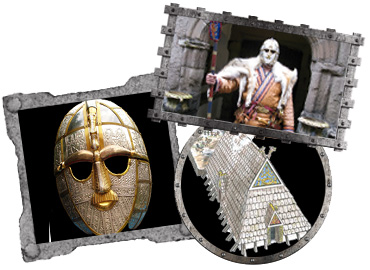 Anglo-Saxon Tamworth (401 - 1066)
Anglo-Saxon Tamworth (401 - 1066)
In Anglo Saxon times, Tamworth was a vitally important centre at the heart of the kingdom of Mercia. As far back as the 7th to the 9th century, Tamworth was the principle royal and administrative centre of the Mercian kings. Charters show Mercian Royal families celebrated both Easter and Christmas at Tamworth regularly between 751 and 857, staying here far more than other palaces. It is also believed Tamworth had a major royal residence or palace.
However in 874 Tamworth was attacked and destroyed by the Vikings and by 911 Tamworth had become a border town between the Danelaw and the English.
Buhrs
It is thought a buhr – which is a fortified settlement (usually surrounded by a ditch and earthen ramparts) was built in King Offa’s time. This helped protect trade and culture from attacks, and as bases for launching assaults against Viking raiders. It is believed this was the site of royal palace.
In 913, Aethelflaed, Lady of the Mercians, is known to have re-fortified Tamworth. The daughter of King Alfred the Great, she became known as the Lady of the Mercians. Her death in 918 in Tamworth resulted in Mercia being merged into Wessex. The Aethelflaeda Monument stands today at the foot of Tamworth Castle just through the Gatehouse.
Watermill
Archaeology in the 1970s revealed two water mills in Tamworth. The first mill is dated to the mid 800s and is believed to be the earliest watermill (post Roman) found in Britain. The water mills were used to grind grain for food. The mills were powered by the River Anker and were located a little out of the royal palace enclosure.
'Battle and Tribute'
The top floor of the Castle is now home to a brand new interactive exhibition which brings the area’s rich Anglo-Saxon history to life, including the role of our famous warrior queen, Aethelflaed. It also explores many exciting aspects of the Staffordshire Hoard, including themes of battle, kingship and the warrior culture in Anglo-Saxon Mercia. Read more here...















